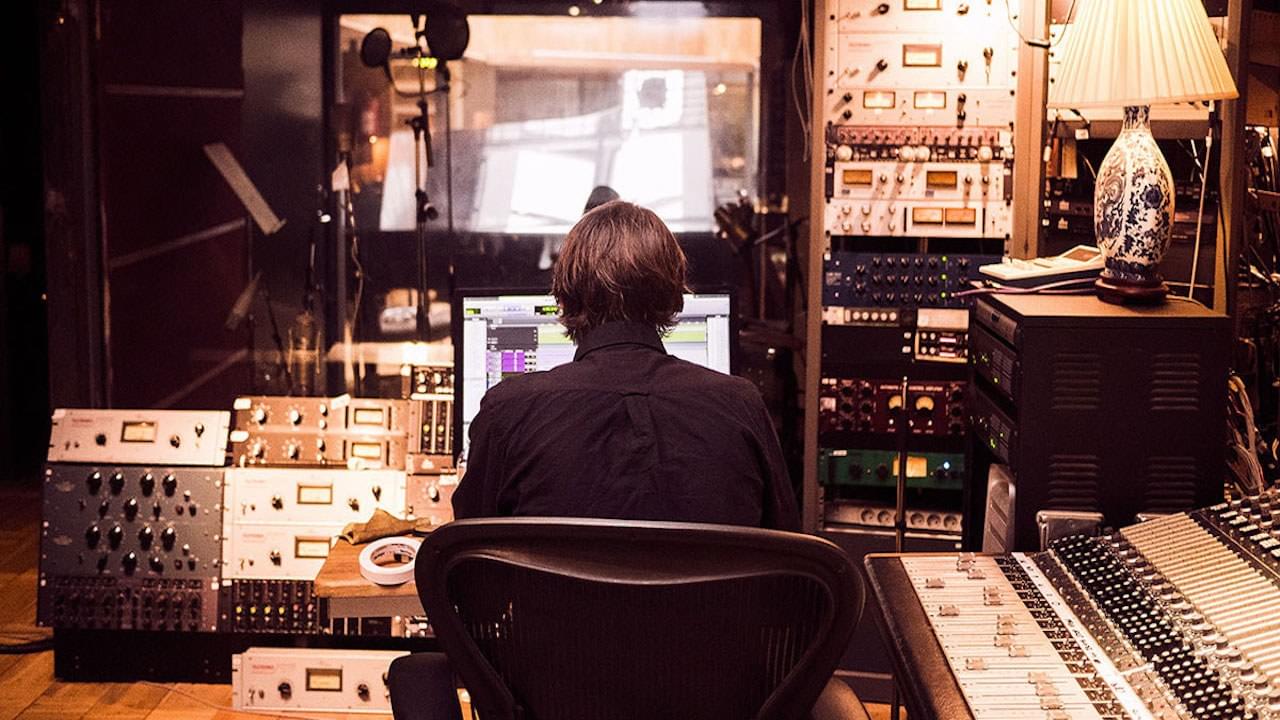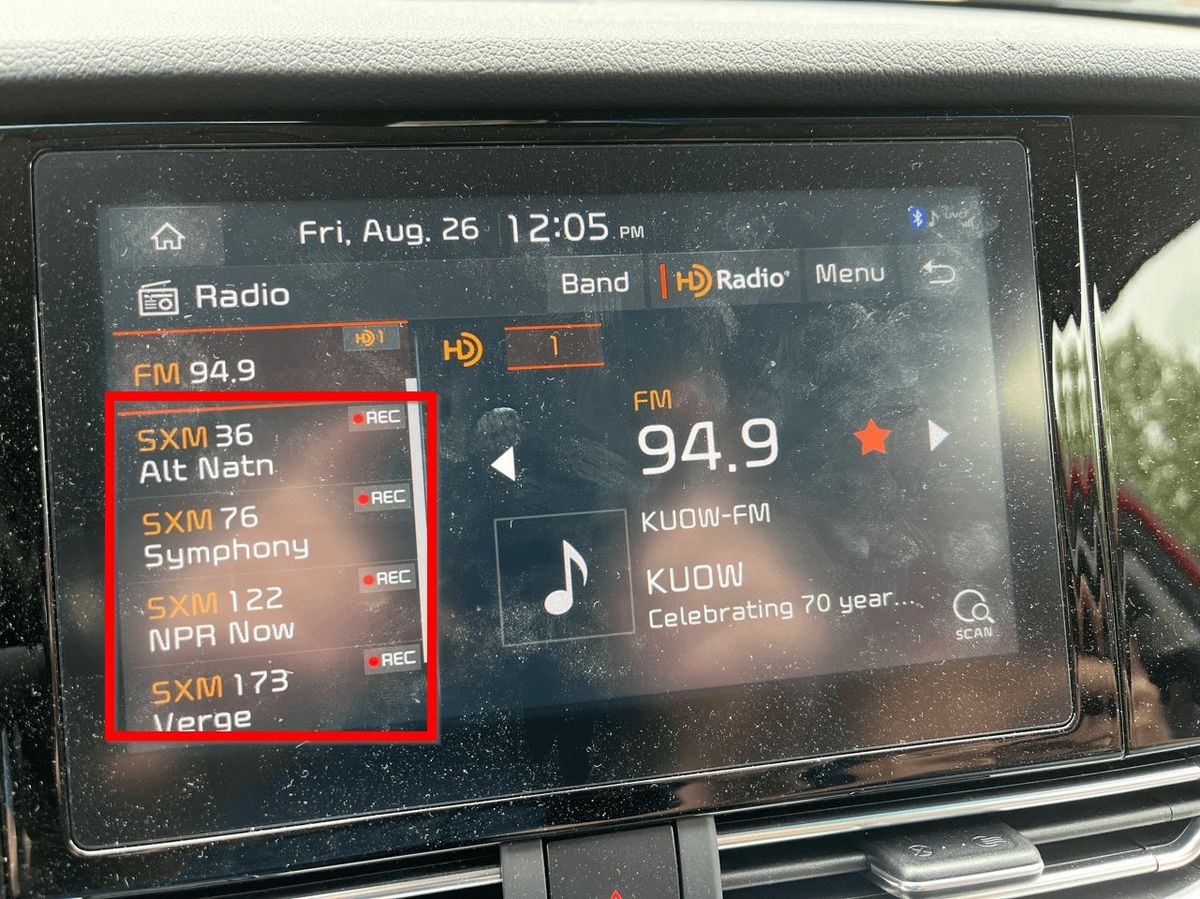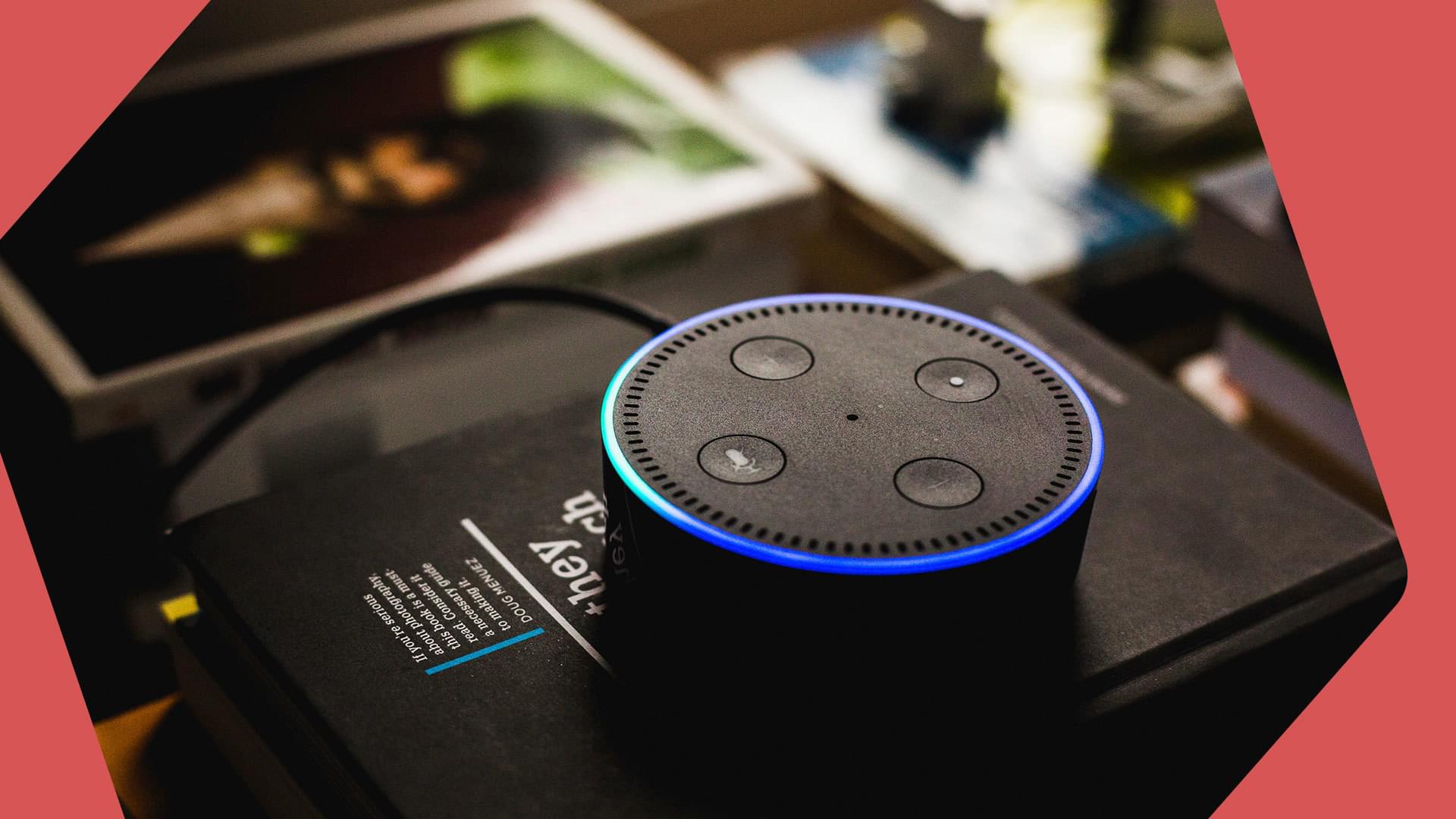Home>Devices & Equipment>Radio>How To Have Your Own Radio Station


Radio
How To Have Your Own Radio Station
Modified: March 8, 2024
Learn how to start your own radio station from scratch and broadcast your favorite music, shows, and podcasts to listeners around the world with our comprehensive guide!
(Many of the links in this article redirect to a specific reviewed product. Your purchase of these products through affiliate links helps to generate commission for AudioLover.com, at no extra cost. Learn more)
Table of Contents
- Introduction
- Understanding the Basics of Radio Stations
- Choosing the Right Equipment
- Setting Up Your Radio Studio
- Obtaining the Necessary Licenses and Permissions
- Building Your Audience
- Creating Engaging Radio Content
- Broadcasting and Streaming Your Radio Station
- Promoting and Marketing Your Radio Station
- Monetizing Your Radio Station
- Conclusion
Introduction
Welcome to the fascinating world of radio stations! If you’ve ever dreamed of having your own radio show or starting your own radio station, you’re in the right place. Radio has long been a popular form of entertainment, providing a diverse range of content for listeners all over the world. With the advent of the internet and digital technology, the barriers to entry for starting your own radio station have significantly decreased.
In this article, we’ll guide you through the process of creating your own radio station. We’ll cover everything from understanding the basics of radio stations, choosing the right equipment, setting up your radio studio, obtaining the necessary licenses and permissions, building your audience, creating engaging radio content, broadcasting and streaming your radio station, promoting and marketing your radio station, as well as monetizing your radio station.
Whether you want to be an on-air personality, a radio entrepreneur, or simply have a platform to share your passion for music or talk shows, this article will provide you with the essential knowledge and steps to start your radio journey.
It’s important to note that while setting up a radio station can be an exciting endeavor, it does require dedication, effort, and a continuous commitment to providing high-quality content. But with the right guidance and approach, you’ll be well on your way to creating a successful and engaging radio station that resonates with your target audience.
So, let’s dive into the world of radio stations and discover the steps to bring your own radio station to life!
Understanding the Basics of Radio Stations
Before diving into the technical aspects of starting your own radio station, it’s essential to have a solid understanding of the basics. Radio stations serve as a platform for broadcasting audio content to a wide audience. They can be categorized into various types, including commercial stations, community stations, internet radio, and college radio.
Commercial radio stations typically generate revenue through advertising and sponsorship. They often feature a variety of music genres, talk shows, news updates, and entertainment programs. These stations are subject to regulatory guidelines and licensing requirements, which vary from country to country.
Community radio stations, on the other hand, are operated by non-profit organizations and focus on serving a specific community or interest group. They often rely on volunteers and donations to support their operations. Community stations play an important role in promoting local artists, grassroots initiatives, and providing a voice to underserved communities.
Internet radio has gained popularity in recent years, thanks to advancements in streaming technology. Internet radio stations are accessible worldwide, allowing broadcasters to reach a global audience. This type of station provides flexibility and freedom in terms of programming, as it is not bound by traditional broadcasting regulations.
College radio stations are operated by educational institutions, typically universities or colleges. These stations give students the opportunity to gain hands-on experience in various aspects of radio broadcasting, from hosting shows to producing content. College radio stations often showcase independent and alternative music, providing a platform for emerging artists.
Understanding the target audience and the type of content you want to deliver is crucial in determining the format and focus of your radio station. Consider your local community, interests, and demographics to tailor your programming to the needs and preferences of your potential listeners.
As you navigate the world of radio stations, it’s important to stay informed about the latest trends, technologies, and industry developments. Attend conferences, join relevant online communities, and follow industry publications to stay up-to-date with the ever-evolving landscape of radio broadcasting.
Now that you have a solid grasp of the basics, let’s move on to the next step: choosing the right equipment for your radio station.
Choosing the Right Equipment
When it comes to setting up your own radio station, choosing the right equipment is crucial for ensuring the quality of your broadcasts. The equipment you’ll need will depend on the type of radio station you want to create, your budget, and the level of professionalism you aspire to achieve.
Here are some essential pieces of equipment you’ll need to consider:
- Microphones: Invest in high-quality microphones to capture clear and crisp audio. It’s important to choose microphones that suit your broadcasting style, whether it’s a dynamic microphone for radio personalities or condenser microphones for capturing live performances or interviews.
- Headphones: A good pair of headphones is essential for monitoring audio quality and ensuring proper levels during broadcast. Look for headphones that provide accurate audio reproduction and are comfortable to wear for long durations.
- Audio Mixer: An audio mixer allows you to control and balance the audio levels of different sources. It’s the heart of your radio station setup, as it enables you to mix multiple audio sources, such as microphones, music players, and sound effects, to create a seamless broadcast. Choose a mixer with the appropriate number of channels and features that suit your requirements.
- Computer: A reliable computer is essential for managing your radio station’s automation software, editing audio recordings, and running broadcasting software. Opt for a computer with sufficient processing power and storage capacity to handle your broadcasting needs.
- Broadcasting Software: Choose broadcasting software that is compatible with your computer and offers features such as scheduling, automation, and live streaming. There are various options available, both free and paid, so research and select the software that best meets your needs.
- Audio Interfaces: An audio interface is necessary for connecting your microphones and other audio sources to your computer. Look for interfaces that have good sound quality, low latency, and multiple input/output options to accommodate your setup.
- Studio Monitors: Studio monitors are speakers designed for accurate and detailed audio reproduction. They enable you to monitor your broadcasts and ensure the quality of your sound output. Invest in monitors that provide a flat frequency response and have the appropriate power and size for your studio space.
It’s important to do thorough research, read reviews, and seek recommendations from professionals in the field before making any purchasing decisions. Consider your budget constraints and prioritize equipment that will have the most significant impact on the quality of your broadcasts.
In addition to these core equipment items, you may also need additional accessories such as microphone stands, pop filters, shock mounts, and cables to complete your setup. Take your time to plan and budget for all the necessary equipment to ensure a smooth and successful launch of your radio station.
With the right equipment in place, you’re now ready to move on to the next step: setting up your radio studio.
Setting Up Your Radio Studio
Setting up your radio studio is a crucial step in creating a professional and functional environment for your broadcasts. Whether you have a dedicated room or a small corner in your home, here are some key considerations to keep in mind:
- Acoustic Treatment: Proper acoustic treatment is essential for ensuring optimal sound quality in your studio. Consider using acoustic panels, diffusers, and bass traps to control reflections and minimize unwanted echoes or reverberations.
- Furniture and Layout: Invest in comfortable and ergonomic furniture for your studio. This includes a desk, chair, and storage solutions to keep your equipment organized. Plan your layout in a way that promotes easy access to all your equipment and allows for smooth workflow during broadcasts.
- Soundproofing: If you’re sharing a space with others or want to minimize external noise, consider soundproofing your studio. This can be achieved by using acoustic insulation, double-pane windows, or soundproof booths.
- Lighting: Proper lighting not only enhances the visual appeal of your studio but also creates a welcoming and professional atmosphere. Incorporate adjustable lighting options, such as LED lights or studio lamps, to ensure you have adequate lighting for on-air broadcasts and video recordings.
- Cable Management: With multiple cables connecting your equipment, cable management is crucial for maintaining an organized and tidy studio. Use cable organizers, clips, and cable sleeves to keep cables neatly tucked away and prevent tripping hazards.
- Backup Power: A power outage can disrupt your broadcasting schedule and lead to downtime. Consider investing in a reliable uninterruptible power supply (UPS) to provide backup power in case of an electrical outage.
- Monitoring System: Set up a monitoring system that allows you to listen to your broadcasts in real-time. This can be as simple as connecting your headphones to your audio mixer or using a dedicated monitoring system with multiple audio inputs and outputs.
Remember to consider the specific needs and requirements of your radio station when setting up your studio. If you’re planning on hosting guests or conducting interviews, ensure you have adequate seating and a comfortable environment for them.
Once your studio is set up, spend some time familiarizing yourself with the equipment and software. Practice recording and broadcasting to ensure everything is working smoothly and that you’re comfortable with the setup.
With your radio studio all set, you’re now ready to move on to the next step: obtaining the necessary licenses and permissions.
Obtaining the Necessary Licenses and Permissions
Before you can legally operate your radio station, it’s crucial to obtain the necessary licenses and permissions. The specific requirements will vary depending on your location and the type of radio station you’re establishing. Here are some key steps to consider:
- Research and Consult Regulatory Bodies: Start by researching the regulatory bodies and laws governing radio broadcasting in your country or region. Contact these authorities to understand the specific licenses and permissions required for operating a radio station. They will provide you with the necessary guidance and instructions to navigate the licensing process.
- Apply for Licenses: Once you have a clear understanding of the required licenses, fill out the necessary applications and submit them to the respective regulatory bodies. Be prepared to provide detailed information about your station, its purpose, programming, and any other relevant details. Pay attention to application deadlines and requirements to ensure a smooth process.
- Comply with Broadcasting Standards: Radio stations are subject to broadcasting standards that ensure they meet certain guidelines for content, advertising, and public safety. Familiarize yourself with these standards and ensure that your programming adheres to these regulations. This may include restrictions on explicit content, maintaining a balanced approach to news reporting, and respecting copyright laws.
- Music Licensing: If your radio station will be playing copyrighted music, you will need to obtain the necessary licenses from music licensing organizations. These organizations, such as ASCAP, BMI, or SESAC, collect royalties on behalf of songwriters and publishers. Contact them to understand the requirements and fees associated with music licensing for your station.
- Public Performance Rights: In addition to music licensing, you may need to secure public performance rights if you plan to host live performances or concerts on your radio station. These rights ensure that artists are fairly compensated for their performances. Consult with performance rights organizations in your country to determine the necessary steps to obtain these rights.
- Community Radio Permissions: If you’re establishing a community radio station, you may need to engage with local community organizations or governing bodies to obtain permissions or partnerships. These collaborations can help strengthen your station’s ties with the community and provide additional resources and support.
It’s essential to be proactive and thorough when dealing with licenses and permissions. Compliance with legal requirements not only ensures the smooth operation of your radio station but also demonstrates your commitment to upholding industry standards and serving your audience responsibly.
Throughout the licensing process, maintain clear documentation of all approvals, permits, and licenses obtained. This will help in establishing credibility, demonstrating compliance, and ensuring a seamless transition if ownership or management changes occur in the future.
Once you have obtained the necessary licenses and permissions, you can move on to the exciting part – building your audience and creating engaging radio content.
Building Your Audience
Building an audience is a crucial aspect of running a successful radio station. Your listeners are the lifeblood of your station, and the size and engagement of your audience will determine the reach and impact of your broadcasts. Here are some strategies to help you build and grow your audience:
- Identify Your Target Audience: Define your target audience based on factors such as age, location, interests, and listening preferences. Understanding your audience will help you create content and tailor your programming to their needs and preferences.
- Develop Compelling Content: Invest time and effort in creating high-quality, compelling content. Whether it’s music playlists, talk shows, or podcasts, ensure that your content is engaging and unique. Consider incorporating audience interaction through live call-ins, listener polls, or social media engagement to enhance the sense of community and connectivity.
- Promote on Social Media: Establish a strong presence on social media platforms relevant to your target audience. Share highlights from your shows, behind-the-scenes glimpses, and interact with your followers. Use social media advertising and targeted campaigns to expand your reach and attract new listeners.
- Encourage Word-of-Mouth Marketing: Leverage the power of word-of-mouth by encouraging your existing listeners to spread the word about your radio station. Offer incentives such as giveaways, contests, or discounts for referrals. Engage with your audience and respond to their comments and feedback to foster a loyal and enthusiastic community.
- Collaborate with Influencers: Partner with influencers, bloggers, or other popular personalities in your niche to reach their audience and promote your station. This can include interviews, guest appearances, or cross-promotion of content.
- Attend Events and Engage in Local Community: Participate in local events, festivals, and community gatherings to raise awareness about your radio station. Establish partnerships with local businesses and organizations to increase visibility and support within your community.
- Utilize SEO and Online Directories: Optimize your website and online presence for search engines to improve your visibility. Submit your radio station to online directories and listings to make it easier for potential listeners to discover your station.
- Monitor and Analyze Data: Utilize analytics tools to track and analyze your audience data. Understand listener demographics, peak listening times, and popular content. Use this information to make informed programming decisions and tailor your content to better cater to your audience’s preferences.
Building an audience takes time, consistency, and active engagement. Be patient and persistent, and don’t be afraid to experiment with different strategies to find what works best for your station. Continuously evaluate and adapt your approach based on feedback and audience response.
Remember that building an audience is an ongoing process. Keep your content fresh and innovative, actively engage with your listeners, and consistently seek ways to enhance their experience. With dedication and creativity, you can grow a loyal and dedicated audience for your radio station.
Next, let’s explore the importance of creating engaging radio content to keep your audience hooked.
Creating Engaging Radio Content
The key to a successful radio station lies in creating engaging content that captivates and retains your audience. Your content should be informative, entertaining, and relevant to the interests of your target listeners. Here are some tips for creating content that keeps your audience hooked:
- Understand Your Audience: Regularly assess the interests and preferences of your audience. Conduct surveys, polls, and encourage audience feedback to gain insights into their preferences. Use this information to tailor your content to their needs and engage with them on a deeper level.
- Variety is Key: Keep your content fresh and diverse to appeal to a wide range of listeners. Mix up your programming by including music from different genres, talk shows, interviews, and special segments. This variety will help prevent monotony and keep your audience engaged and interested.
- Striking a Balance: Find the right balance between music and spoken content. Ensure that your music selection aligns with your target audience’s preferences and the overall theme of your station. Introduce relevant and engaging spoken content such as news updates, interviews, and thought-provoking discussions.
- Host Engaging Shows: Invest in talented and charismatic on-air personalities who can connect with your audience. Encourage hosts to interact with listeners, take live calls, and conduct compelling interviews. Their energy and rapport with the audience will enhance the overall listening experience.
- Create Compelling Segments: Incorporate special segments within your shows to grab listeners’ attention. These can include trivia quizzes, listener dedications, countdowns, or exclusive sneak peeks into upcoming music releases. Such segments add excitement and interactivity to your broadcasts.
- Stay Current and Relevant: Keep up with current events, trends, and popular culture. Incorporate relevant news updates, celebrity interviews, or discussions on trending topics to ensure your station remains connected to the pulse of your audience.
- Encourage Listener Participation: Engage your audience by encouraging them to participate actively. Conduct contests, giveaways, and promotions that require listener involvement. Create interactive social media campaigns, encourage requests, and dedicate songs to listeners to make them feel valued and involved.
- Professional Production Quality: Invest in high-quality production to ensure your content sounds professional and polished. Use effective audio editing techniques, sound effects, and jingles to enhance the overall listening experience. Deliver content that is clear, crisp, and well-produced.
Remember that the success of your radio station depends on consistently delivering content that resonates with your audience. Regularly evaluate the performance of your shows, seek feedback from listeners, and adapt your programming to meet their evolving needs and interests.
Experiment with different content formats, try out new ideas, and be open to feedback and suggestions from your audience. Building a strong connection with your listeners is crucial for creating a loyal and dedicated fan base.
Now that you know how to create engaging radio content, it’s time to explore the next step: broadcasting and streaming your radio station for your audience to enjoy.
Broadcasting and Streaming Your Radio Station
Once you have your content ready, it’s time to broadcast and stream your radio station, making it accessible to your audience. With advancements in technology, there are various options available for reaching your listeners. Here’s how you can broadcast and stream your radio station:
- FM/AM Broadcasting: If you’re starting a traditional radio station, you’ll need to obtain a broadcast license and comply with the regulations set by the regulatory bodies in your country. You’ll also need to invest in transmitting equipment, such as transmitters and antennas, to broadcast your signal over the airwaves.
- Internet Streaming: Streaming your radio station on the internet allows you to reach a global audience. You can choose to use a dedicated streaming platform or set up your own streaming server. There are numerous streaming services available that provide reliable and customizable solutions. Research and choose a platform that suits your needs and budget.
- Podcasting: Consider creating podcasts of your radio shows to reach a wider audience. This allows your listeners to access your content at their convenience. You can distribute your podcasts through popular podcast directories, such as Apple Podcasts, Spotify, or Google Podcasts.
- Mobile Applications: Develop a mobile application for your radio station to make it easily accessible to smartphone users. A dedicated app can enhance the listening experience, provide on-demand content, and allow users to interact with your station.
- Online Platforms: Utilize popular online platforms, such as social media, YouTube, or Twitch, to live stream your shows or share recorded content. These platforms offer built-in audiences and provide additional exposure for your station.
- Collaborate with Other Stations: Consider collaborating with other radio stations or online platforms to cross-promote each other’s content. This can help expand your reach and attract new listeners who may be interested in similar programming.
When streaming or broadcasting your radio station, ensure that the quality is consistent and reliable. Pay attention to the audio encoding settings to ensure optimal sound quality while still maintaining a manageable streaming bitrate for listeners with varying internet speeds.
It’s important to promote your streams and broadcasts through your website, social media channels, and other promotional channels. Encourage your listeners to share and spread the word about your radio station, and engage with them through comments, messages, and live chat during broadcasts to create an interactive and immersive listening experience.
Remember to comply with licensing agreements and copyright laws when streaming music or other copyrighted content. Ensure that you have the necessary licenses to broadcast the songs and content you play on your radio station to avoid any legal issues.
By leveraging the power of technology and exploring different broadcasting options, you can reach a wide audience and provide an engaging listening experience for your listeners.
Next, let’s delve into the importance of promoting and marketing your radio station to attract more listeners and build brand awareness.
Promoting and Marketing Your Radio Station
Promoting and marketing your radio station is essential for attracting new listeners, building brand awareness, and growing your audience. Effective promotion strategies can help you stand out among the competition and establish a strong presence in the industry. Here are some key strategies to consider:
- Create a Compelling Brand: Develop a unique and memorable brand identity for your radio station. This includes creating a logo, selecting a color palette, and crafting a distinctive tone and style for your station’s messaging. Consistency in branding across all platforms will help create a recognizable and cohesive image.
- Optimize Your Online Presence: Invest in a professional website that showcases your radio station and highlights your programming. Optimize your website for search engines to ensure it appears in relevant searches. Include information about your shows, hosts, schedules, and any special events or promotions. Utilize social media platforms to engage with your audience and promote your station.
- Collaborate with Influencers: Partner with bloggers, social media influencers, or local celebrities who align with your target audience. Invite them to appear as guests on your shows or ask them to promote your station through their platforms. This collaboration can introduce your station to new audiences and provide valuable endorsements.
- Run Contests and Giveaways: Engage your audience by hosting contests and giveaways. Offer prizes such as concert tickets, merchandise, or exclusive experiences related to your content or the interests of your listeners. Promote these contests through your website, social media channels, and on-air announcements to generate excitement and attract new listeners.
- Community Engagement: Connect with your local community by sponsoring or participating in events, supporting local charities, or hosting fundraising campaigns. By actively engaging with your community, you’ll establish goodwill and strengthen your brand’s reputation.
- Cross-Promote with Partner Brands: Collaborate with complementary brands or businesses to cross-promote each other’s offerings. This can include joint marketing campaigns, giveaways, or co-hosted events. By tapping into each other’s audiences, you’ll increase brand visibility and reach a broader demographic.
- Host Live Events and Broadcasts: Organize live events, concerts, or special broadcasts to provide unique experiences for your listeners. This will create opportunities for in-person interactions, help build a sense of community, and provide memorable moments associated with your station.
- Collect and Utilize Listener Feedback: Encourage your listeners to provide feedback, reviews, and suggestions. Actively listen to their opinions and incorporate their suggestions whenever possible. This not only shows your commitment to delivering content they enjoy but also fosters an engaged and loyal audience.
Remember to track and analyze the effectiveness of your promotional efforts by monitoring website traffic, social media engagement, listener feedback, and any other relevant metrics. This data will help you identify which strategies are most successful and refine your promotional campaigns accordingly.
Consistency is key in promoting your radio station. Dedicate time and effort to implementing a well-rounded marketing plan that combines online and offline tactics to reach a broader audience and build brand recognition. With a strategic and creative approach, your promotional efforts can significantly contribute to the growth and success of your radio station.
Now, let’s explore the potential to monetize your radio station and turn your passion into a revenue-generating venture.
Monetizing Your Radio Station
Monetizing your radio station is an important aspect of transforming your passion into a sustainable and profitable venture. While it may take time to generate substantial revenue, there are several avenues you can explore to monetize your radio station:
- Advertising and Sponsorships: One of the most common ways to generate revenue is through advertising and sponsorships. Work with local businesses, brands, or agencies to secure commercial spots or sponsorships during your shows. Offer different advertising packages to cater to varying budgets and target audiences.
- Listener Donations: Create opportunities for your listeners to support your station through donations. Set up a donation portal on your website or encourage listeners to contribute during special events or fundraisers. Show appreciation to donors through shout-outs, exclusive content, or merchandise, creating a sense of community and gratitude.
- Affiliate Marketing: Partner with relevant companies or products and earn a commission for each sale referred through your station’s promotion. This can be done through dedicated segments, promotional codes, or links on your website or social media platforms.
- Events and Concerts: Organize live events, concerts, or performances in collaboration with local artists, bands, or venues. Sell tickets for these events and leverage the popularity of your station to drive attendance and generate revenue. Consider offering VIP packages or merchandise sales to further boost earnings.
- Paid Subscriptions or Memberships: Offer exclusive content, ad-free listening, or other perks through paid subscriptions or memberships. Create tiered pricing options and provide additional benefits to subscribers, such as access to archived shows, behind-the-scenes interviews, or special discounts.
- Syndication and Licensing: Explore opportunities to syndicate your content or license your programming to other radio stations or platforms. This allows you to reach a wider audience and generate income through licensing fees or revenue-sharing agreements.
- Merchandise Sales: Create and sell merchandise featuring your station’s branding, logo, or tagline. This can include t-shirts, hats, stickers, mugs, or other items that resonate with your audience. Set up an online store or collaborate with local retailers to sell your merchandise.
- Podcast Advertising: If you offer podcast versions of your shows, consider incorporating advertising within your episodes. Seek partnerships with podcast advertising networks or directly approach companies interested in targeting your listeners.
It’s important to strike a balance between monetization and maintaining a positive listening experience for your audience. Ensure that your advertisements and sponsorships align with your content and do not compromise the authenticity and quality of your programming.
Regularly review and analyze your monetization strategies to identify what works best for your station. Monitor revenue streams, track listener feedback, and stay open to new opportunities for growth and increasing profitability.
Remember that monetization may take time, especially in the early stages of your radio station. Focus on building a solid listener base, refining your content, and continually engaging with your audience. With dedication, persistence, and adaptability, you can transform your radio station into a sustainable business venture.
Now that you have insights into monetizing your radio station, let’s conclude with a brief summary.
Conclusion
Congratulations on reaching the end of this guide on how to have your own radio station. Starting and running a radio station is an exciting and fulfilling endeavor that allows you to share your passion for music, talk shows, or other forms of audio content with an audience. While it may require effort, dedication, and continuous learning, the journey of building your own radio station is rewarding.
Throughout this article, we covered the basics of radio stations, including the different types of stations and their functions. We also delved into the importance of choosing the right equipment, setting up your radio studio, obtaining the necessary licenses and permissions, and creating engaging radio content. Broadcasting and streaming your station, promoting and marketing it, and exploring monetization strategies were also discussed.
Remember, building an audience takes time and effort. Understand your target audience, create compelling content, and engage with them through social media, events, and collaborations. Seek feedback and continuously refine your programming to meet their needs and preferences. Don’t forget to leverage technology for broadcasting and streaming, utilizing various platforms and channels to reach a wider audience.
Promotion and marketing play a vital role in growing your radio station. Develop a strong brand identity, collaborate with influencers, and engage in community activities to gain exposure. Explore different avenues of monetization, such as advertising, sponsorships, and events, while ensuring the integrity of your content and the positive listening experience of your audience.
Remember, building a successful radio station requires passion, creativity, and adaptability. Stay updated with industry trends, seek continuous improvement, and always prioritize delivering high-quality content. With perseverance, dedication, and a commitment to your listeners, you can create a thriving radio station that leaves a lasting impact.
Now it’s time to put your knowledge into action. Start planning, gather your equipment, obtain the necessary licenses, and begin crafting engaging radio content that speaks to your audience. Embrace the journey and enjoy the process of building and growing your own radio station. Good luck!











